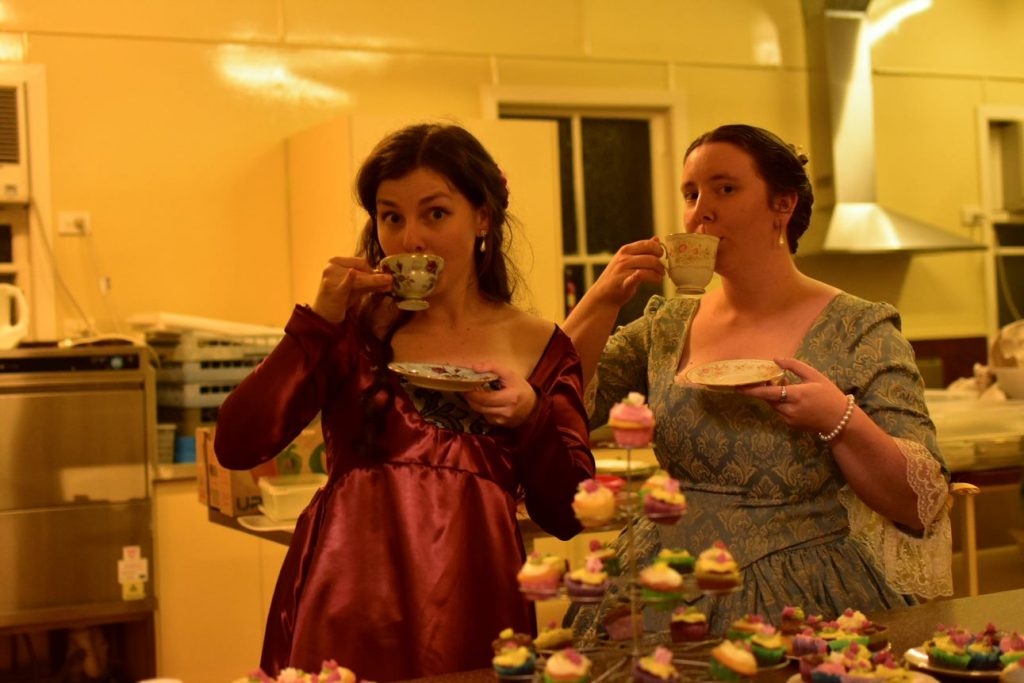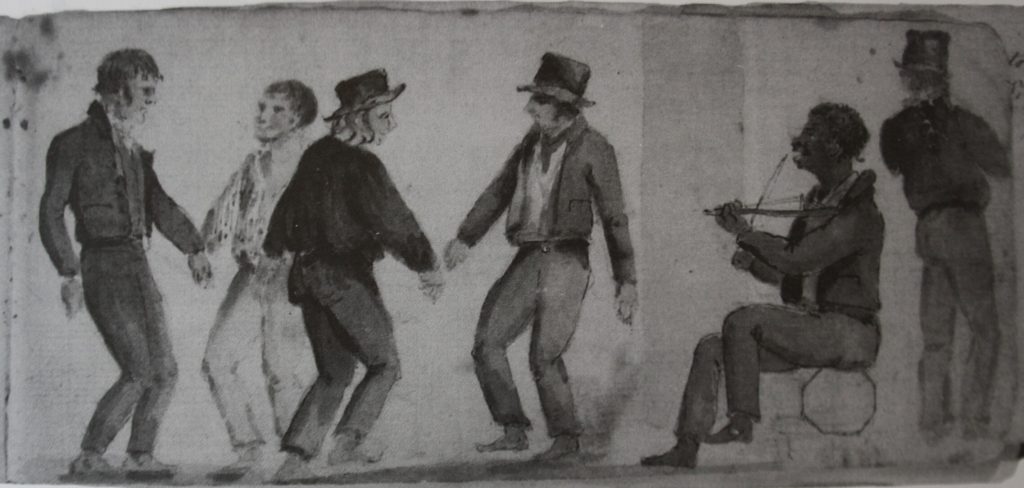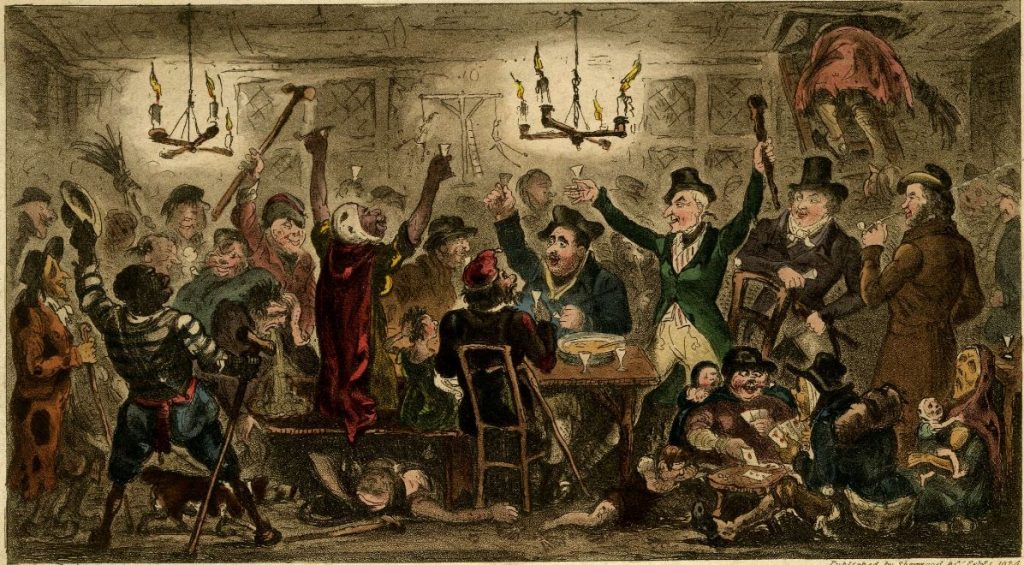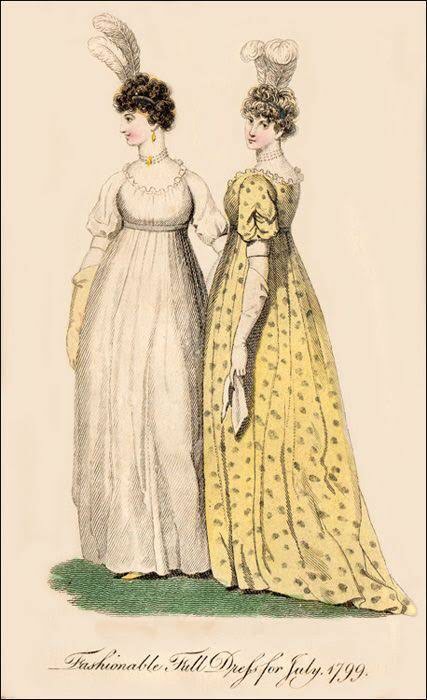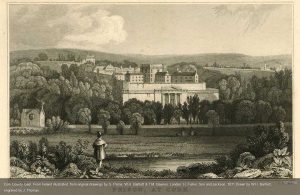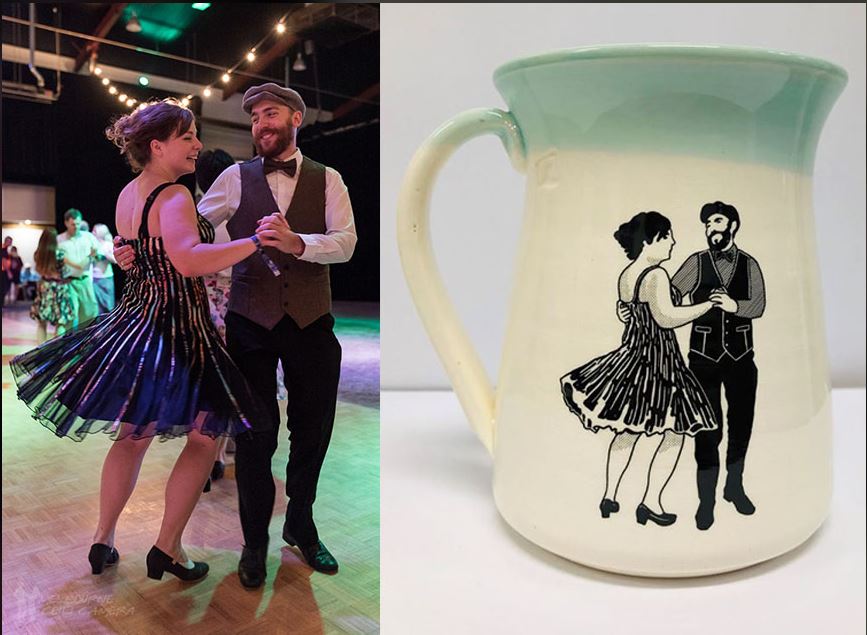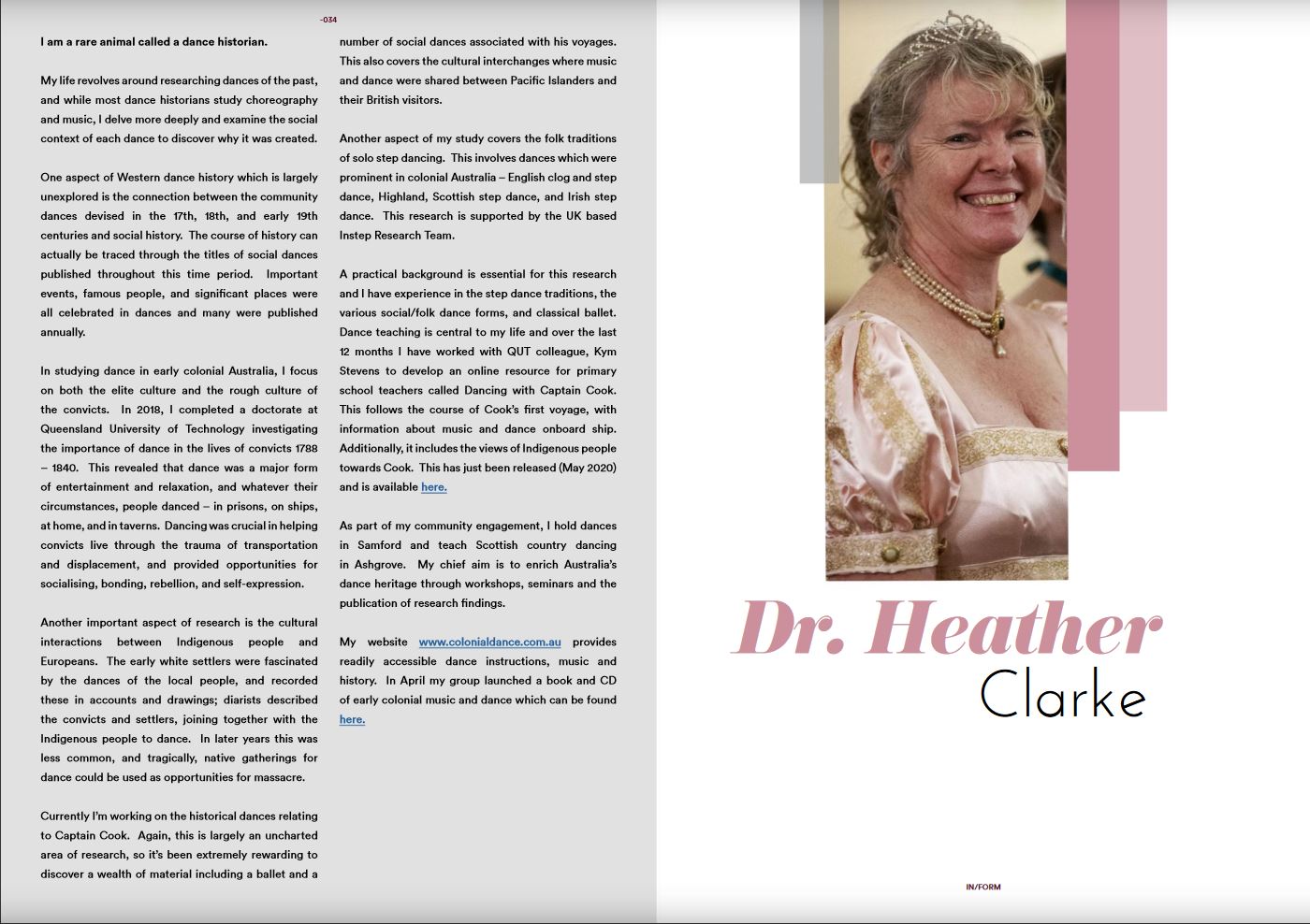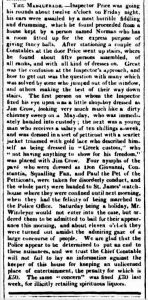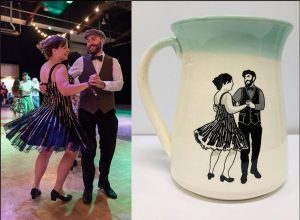Radio interview – Queensland dance history
Dr Heather Clarke with ABC radio’s Kate O’Toole. Listen online – it starts at 18m 20 seconds

Dance culture from the Isle of Man
Our Manx dance group is featured on the front page of the November edition of the Anglo & Celtic magazine, with a lovely article on pages 24 -25. Read it here>>
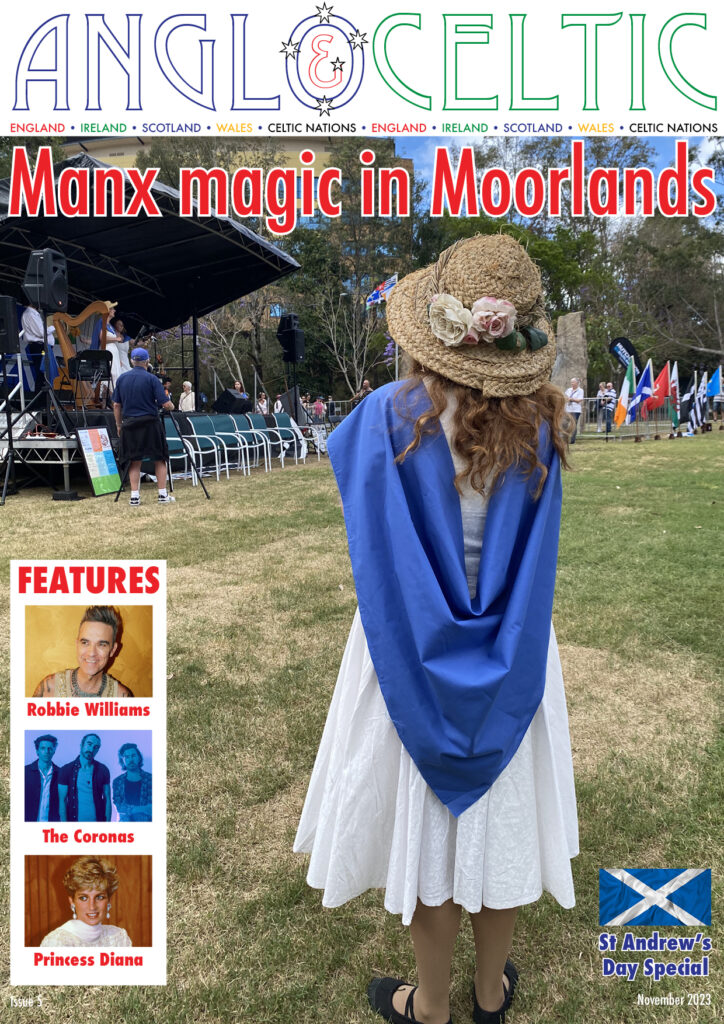
Interview on ABC radio
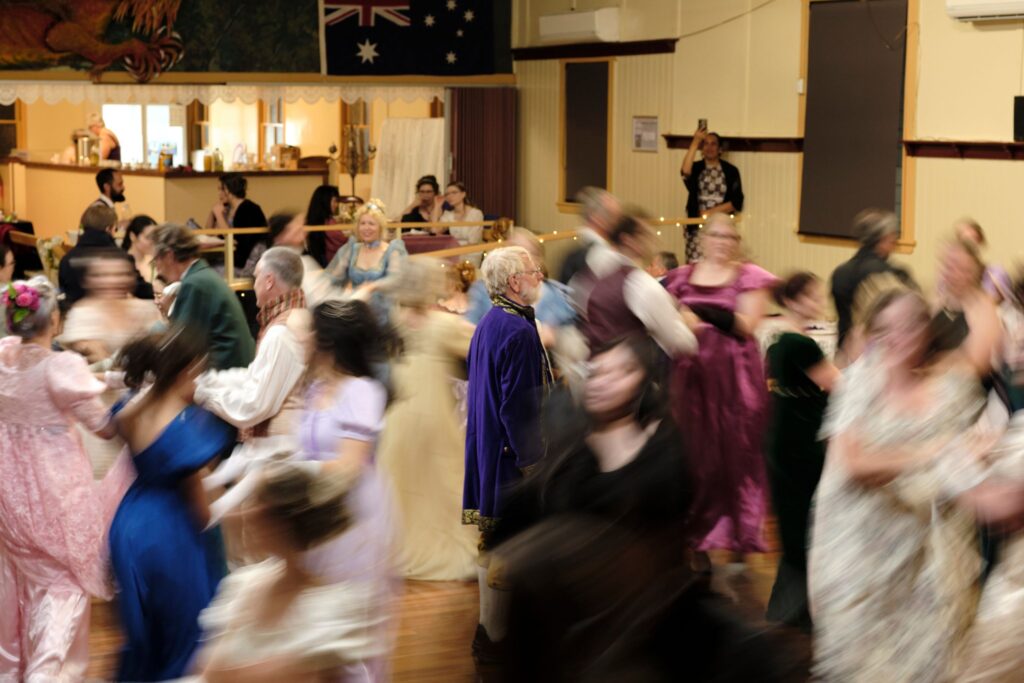
We’re Celebrating!
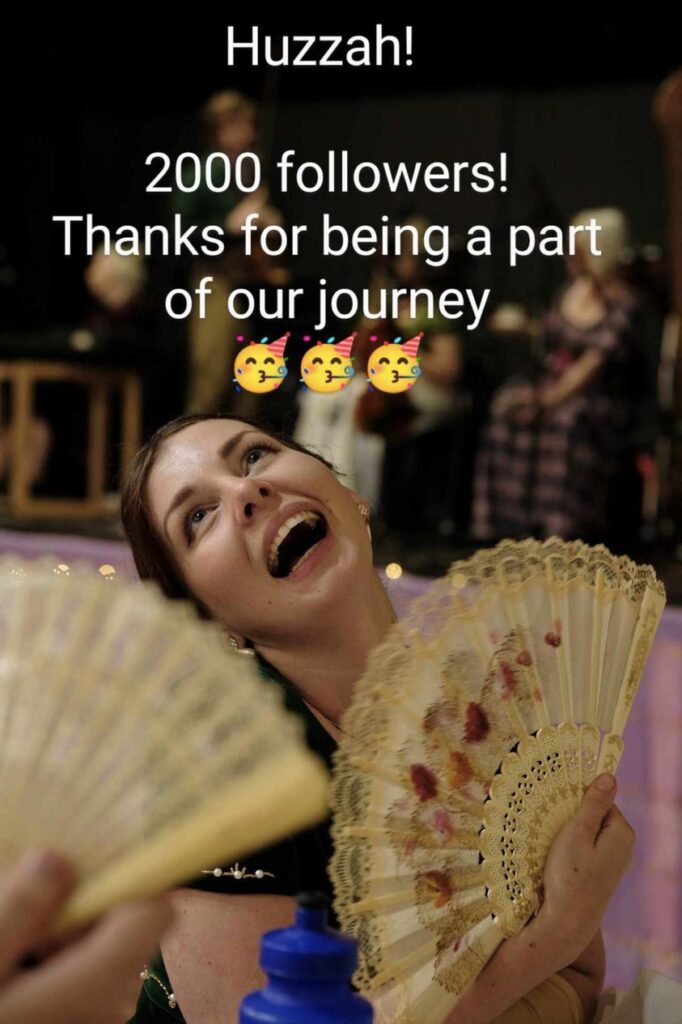
Exhibition Launch in Fremantle
A great article about our Dancing in Fetters exhibition at the Fremantle Prison in the Anglo & Celtic Australia Magazine. Click here>>
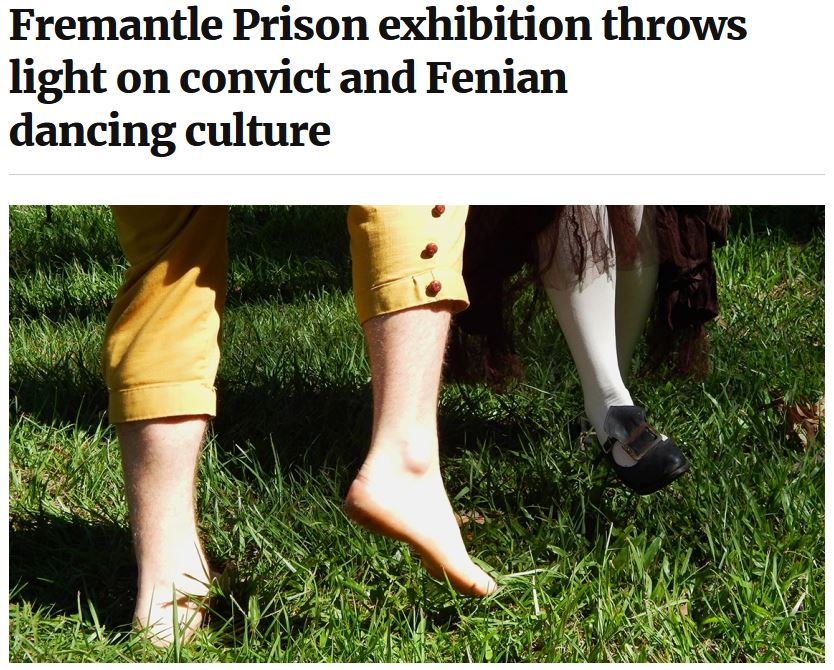
Autumn Newsletter
Click here for our Autumn Newsletter – Irish convict musicians | The story of Phillip’s Dog | Dancing in Fetters exhibition news | Jane Austen Ball at National Folk Festival | Shakespeare in the Gardens | National Heritage Festival | Convict Culture Week on Norfolk Island
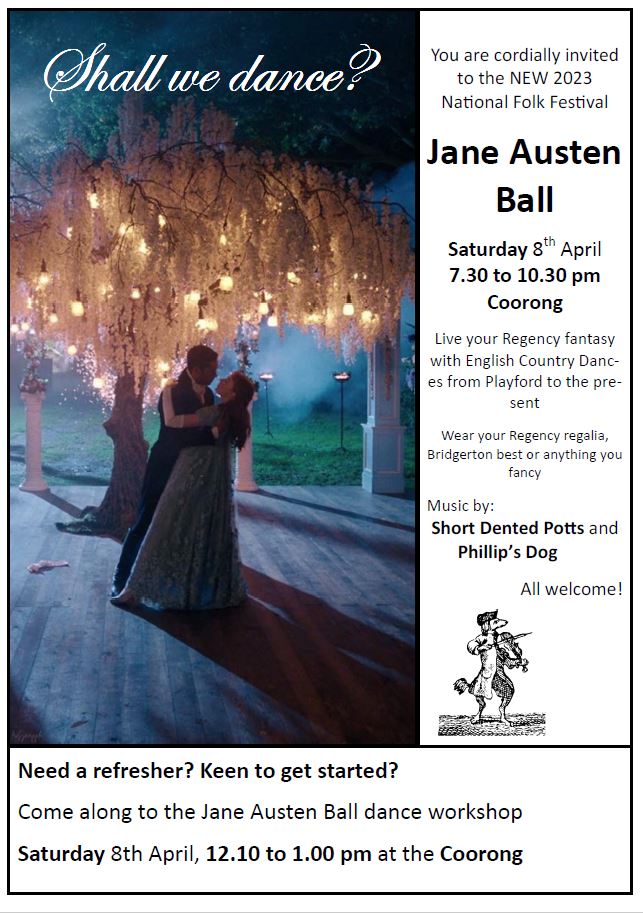
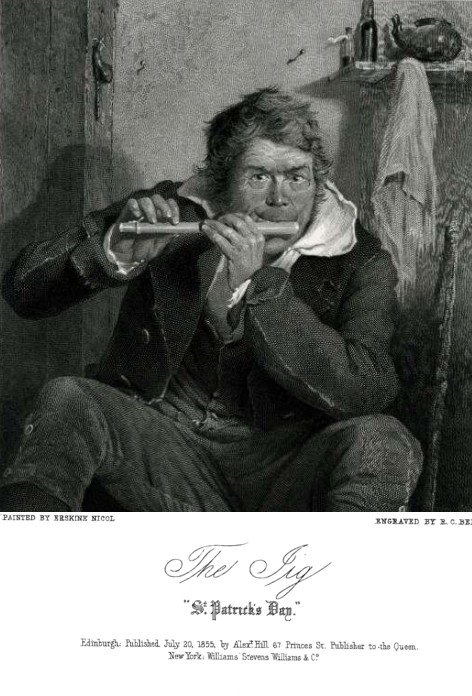
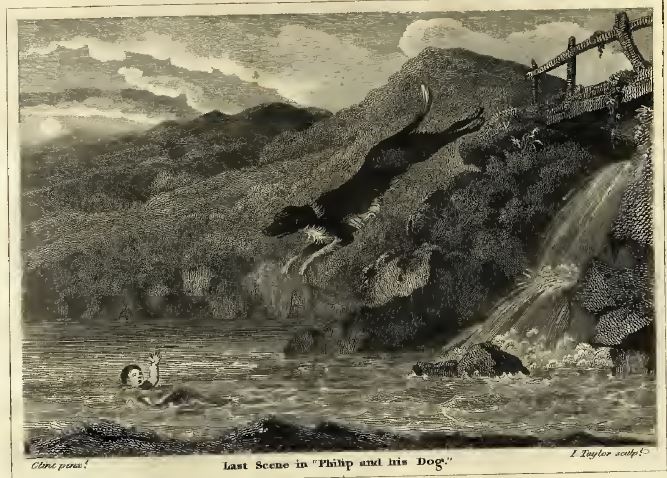
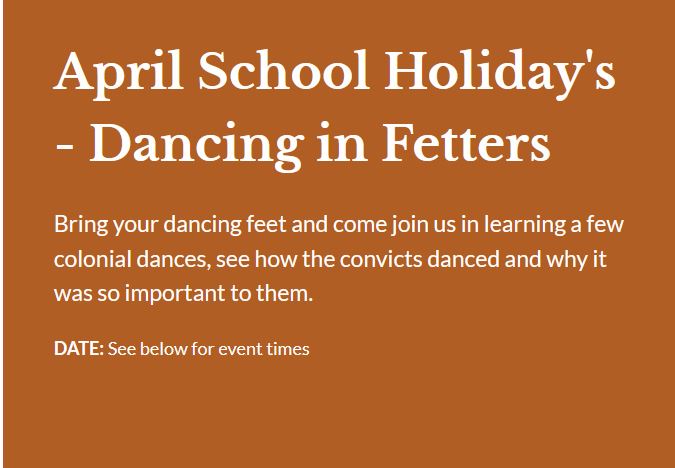
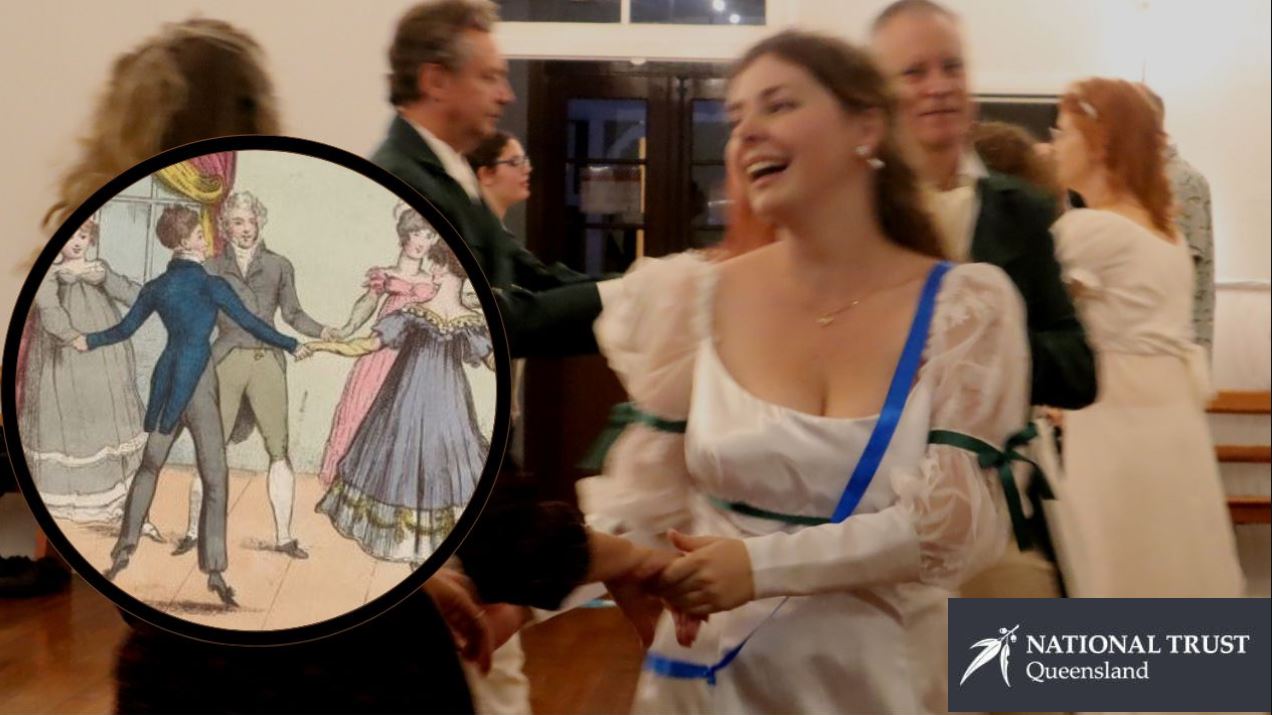
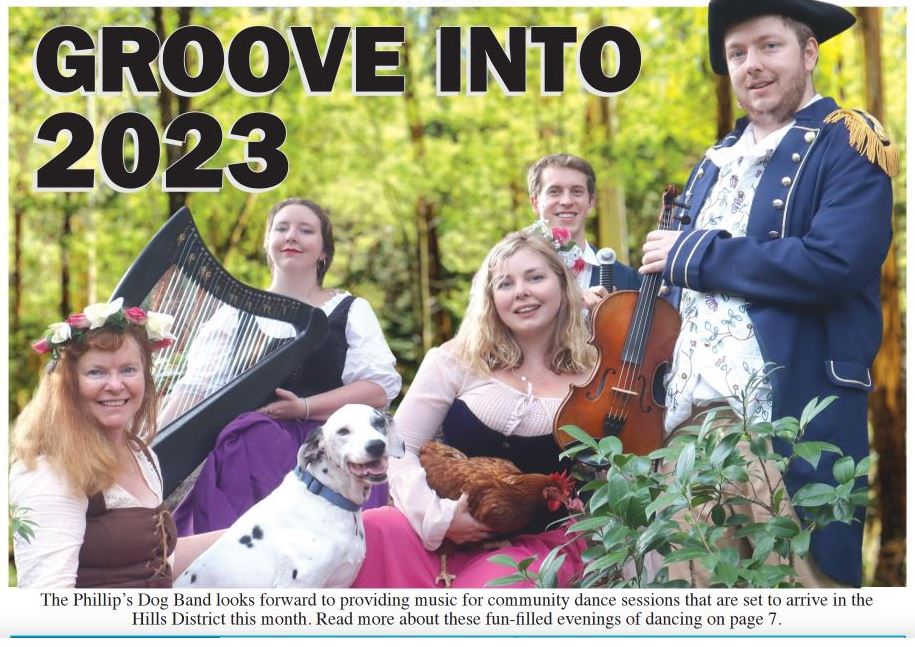
New publication
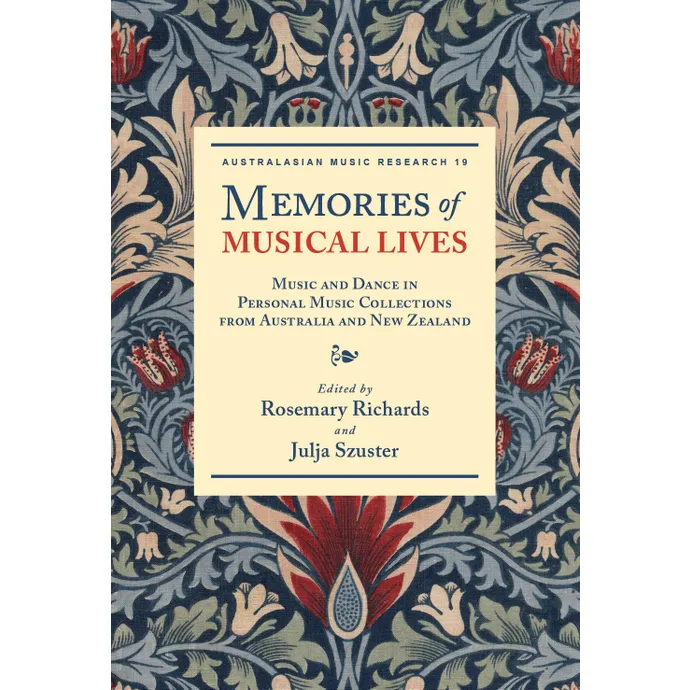
I’m thrilled to see ‘Memories of Musical Lives’ has just been released …” a landmark book in the history of music in private life.”
For myself, writing the chapter on the dance music found in nineteenth-century owner-bound albums involved an extensive study of hundreds of collections of music, as well as a review of dance manuals published in Australia. It’s very gratifying to have contributed the dance aspect for this publication.
In these nine essays, the authors discuss music and dance collections found in libraries, historic houses, archives and homes, explaining what these cherished artefacts reveal about the owners, their emotional life and their musical practice.
Edited by Rosemary Richards and Julja Szuster, Lyrebird Press, Melbourne University,2022. Available at
https://ecommerce.unimelb.edu.au/memories-of-musical-lives-music-and-dance-editors-rosemary-richards-julja-szuster
November Newsletter
We’re changing our name from colonial dance to Historical Dance. Also in our November Newsletter: 200 years since Captain Piper’s grand ballroom, crossing the Blue Mountains, Mental Health Week, how convicts danced on ships, photos from our Jane Austen Ball, Shakespeare Festival, Dancing in Fetters exhibition, an invitation to Samford Community Folk Dance, and more. Read the newsletter>>>

Jane Austen Ball 2022
Photographs by David de Groot Photography. Visit Festival Photographs to see the complete gallery and place an order.

Van Dieman’s Bells
The remarkable discovery of a dance published in 1825 in celebration of Van Diemen’s Land. Read the full story here >>
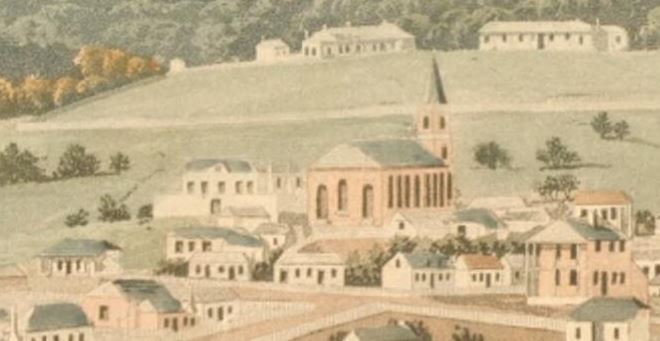
Postpoed
Dancing in Fetters – National tour
Our exhibition Dancing in Fetters: the culture of convict dance is going on tour!
We’ve received funding from Visions of Australia, auspicing by The Abbey Museum, and support for public programming from Bush Traditions.
The tour will include seven sites across Australia with convict connections: Queensland, New South Wales, Tasmania, Norfolk Island, and Western Australia. Stay tuned for updates.
Fuddling
Catherine Boyle, free, Thomas Fellowes, prisoner, and a ticket of leave man were caught fuddling, fiddling and dancing in a disorderly house. Discover the art of fuddling and read Catherine’s story. There’s also a connection to the Much Admired Australian Quadrille.

The Much Admired Australian Quadrille
Although you may think this is a museum piece, it’s really a fun, lively social dance! The music was arranged by the Sydney composer William Ellard using popular melodies from newest and most celebrated operas. The figures were named for local places and it was dedicated to a Sydney belle, Miss Mary Hely of Engehurst. Read more>>
On the programme for our 2021 Jane Austen ball!
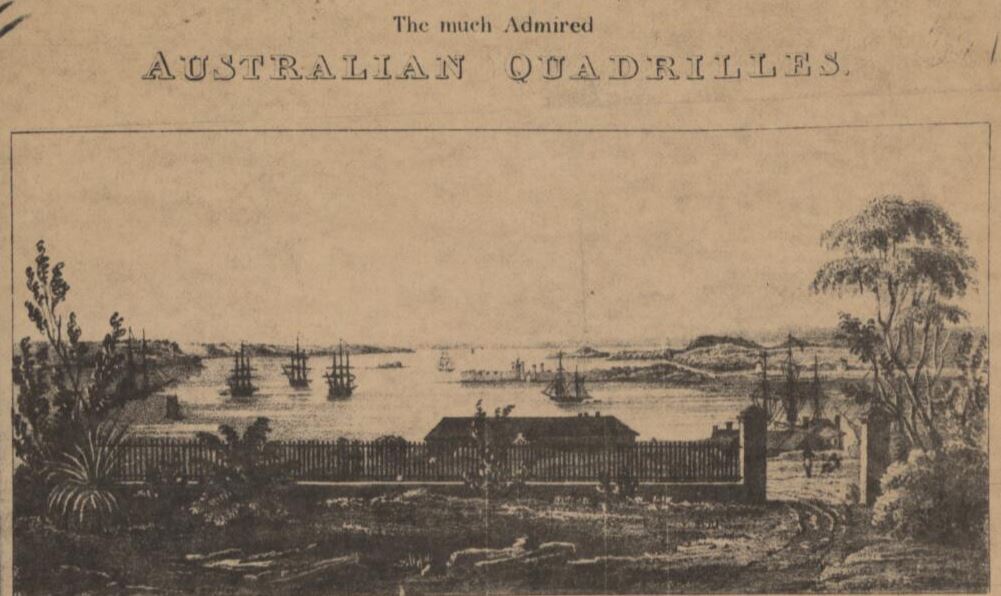
Sydney’s First Play
The performing arts magazine Stage Whispers published in their July 2021 issue, our article about The Recruiting Officer the first play performed in Sydney. The article is now available online at https://www.stagewhispers.com.au/history/sydneys-first-play
For more of the story including the music and dance visit our page The Recruiting Officer
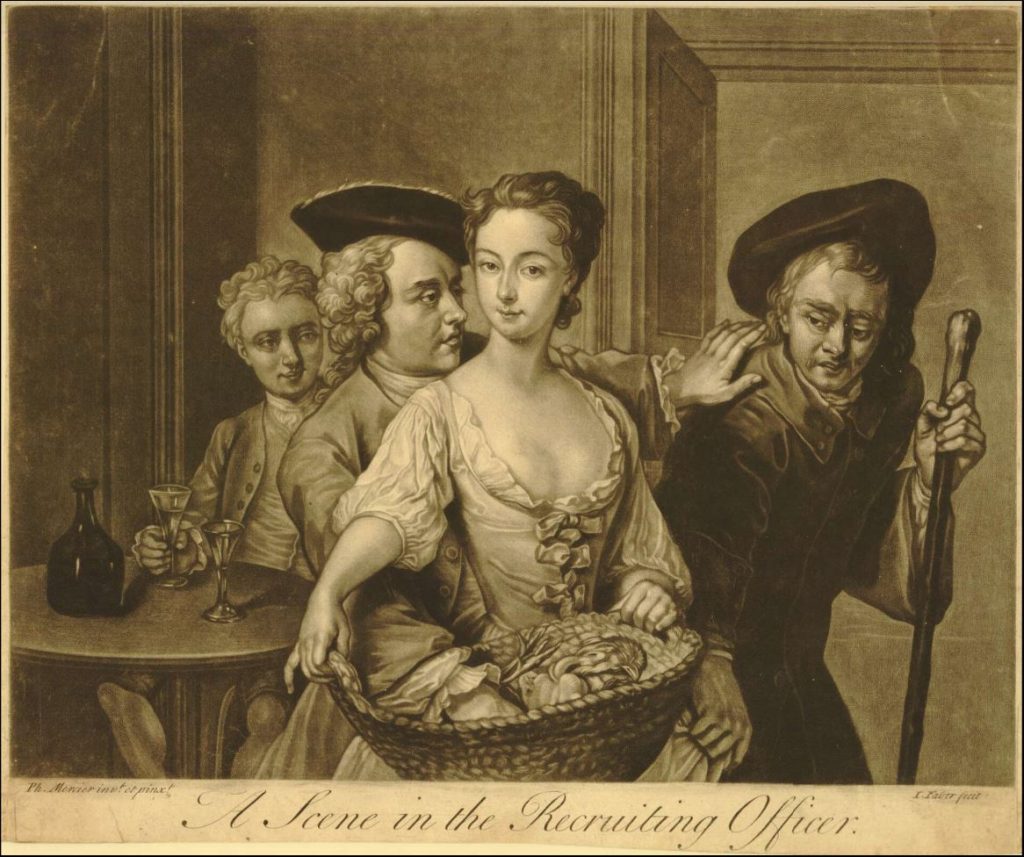
Dancing on the convict ship Claudine
Henry Ryan, Surgeon-Superintendent on the convict ship Claudine, kept a detailed journal from 13 August 1821 to 15 December 1821. The voyage took 113 days from Woolwich to Van Diemen’s Land and transported 160 male convicts, only one of whom died en route. Between October and December, Ryan noted dancing almost daily, usually in the evenings for one, two, or three hours.
9 October 1821: From 6 to 8pm the convicts on deck dancing.
July newsletter
Discovering convict dance music, and more news from Early Colonial Dance. https://mailchi.mp/e7de8219755b/july-newsletter
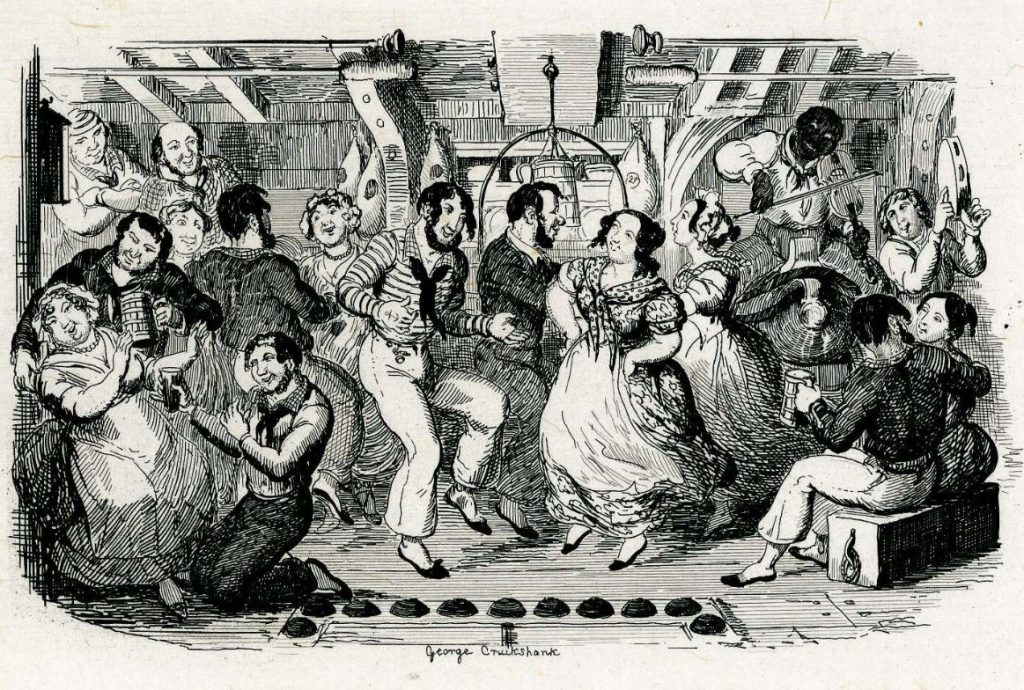
Darby Kelly – a convict’s tune
Convict musician Jeremiah Byrne was sent to ‘dance’ on the treadmill for disturbing the peace and being absent from his assigned home. Darby Kelly O was one of the tunes he played on his flageolet (similar to a tin whistle) at ‘one of those public nuisances…a two-penny hop-shop on the Rocks”.
Hop-shops were dance halls in a public houses in the underclass area of early Sydney – the Rocks. Dancing was one of the most popular leisure activities at the time – even for convicts. Commissioner Bigge who reported unfavourably on Governor Macquarie’s regime, complained that there were far too many hop shops in the colony.
Read more about Darby Kelly O
Sydney’s first play
On 4 June 1789 a group of convicts performed the play “The Recruiting Officer” for Governor Phillip and an audience of 60 officers and their wives to celebrate the birthday of King George III. Read the full story
Associated with the play was a dance and music.
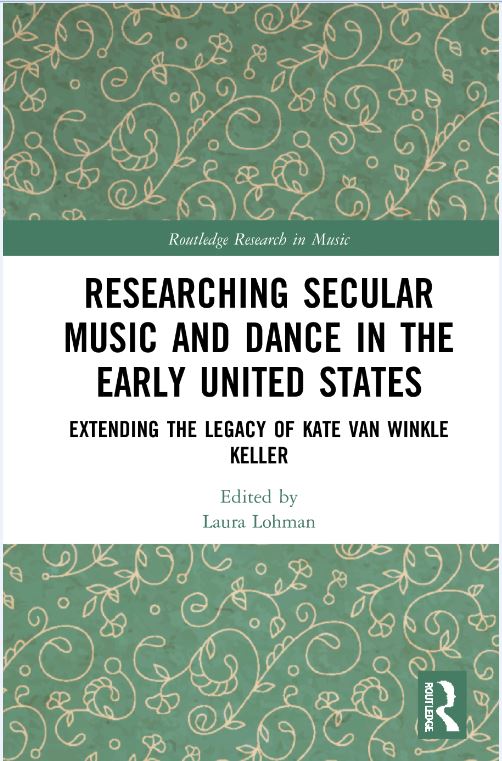
Hot off the press!
A long association with the musicologist and dance historian, Kate van Winkle Keller is celebrated in this new book, Researching Secular Music and Dance in the Early United States. Kate’s work had a profound influence on Heather’s research of dance history in Australia. Heather was recently invited to write a chapter for the book, as well as sections for the conclusion.
Available at Routledge

Dancing on convict ships

On a number of convict ships the surgeons actively encouraged the convicts in their care to dance. This regime was noted in their Medical Journals.
“As I consider that tranquility of mind is most essential to bodily health…I therefore caused [the convicts] to be let on deck from an early time of the morning until the close of the day…They were allowed to amuse themselves by running about, dancing, or in any innocent way whenever the duty of the ship would admit of it.”
From the Medical Journal of William Leyson, Surgeon on the convict ship Henry Wellesley 1837.
Explore this exciting new addition to the website: Dancing on Convict Ships
Podcast: Life Onboard the Convict Ships.
Life onboard the early convict transportation ships could be brutal. The mortality rate was often high. Dr Heather Clarke describes the conditions of these early voyages and the turning point that brought about better conditions for convicts. She also discusses a much-loved form of exercise on the ships – dancing and music. An interview with Heather Clarke and Jennifer Twenlow Listen to the Convict Australia Podcast.
Traditional Australian clog dance
Two of our recent performances at Samford and Cedar Creek have included displays of English clog dancing. This was an extremely popular pastime in colonial Australia. Read more about this tradition. In this video, the Early Colonial Dance team shows celebrity Craig Revel Horwood the type of dance which made his great-great-grandfather the clog dance champion of Australia.
Easter Monday 1810
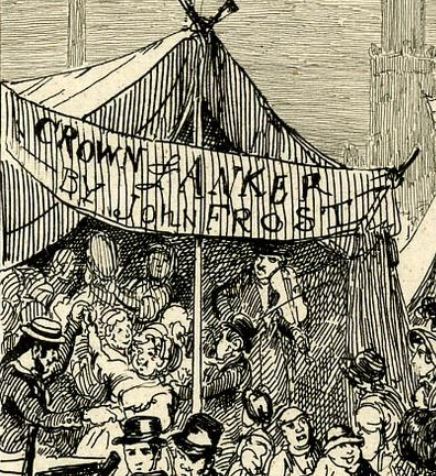
Music and dancing were part of the popular culture in the early colony. Here’s an account of a festival in Sydney where people danced in marquees (then known as booths) dressed in their national costumes.
Monday last being Easter Monday, a fair commenced on the Cricket Ground, to which a sort of popular acquaintance has given the appellation of St. George’s Fields; the recreative pastimes of which were carried on with much decorum and no less festivity for three days, during which the “merry dance” was kept alive in every booth, and other fair costumes of the mother country closely imitated.
“SYDNEY. (1810, April 28). The Sydney Gazette and New South Wales Advertiser (NSW : 1803 – 1842), p. 2. http://nla.gov.au/nla.news-article627976
The first Australian newspaper
On 5th March 1803 George Howe published the first issue of the weekly ‘The Sydney Gazette and The New South Wales Advertiser’, Australia’s first newspaper.
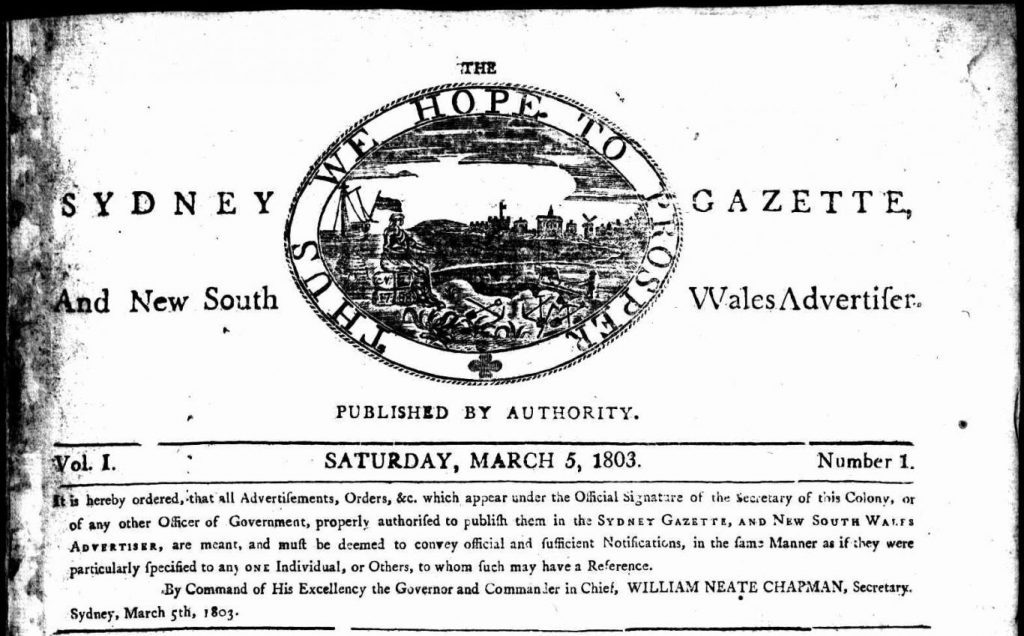
The journalists were convicts and their writing demonstrates both their humour and attitudes. In the first year of publication, there are reports of dancing for the privileged members of society – formal balls with music by the Band of the New South Wales Corps. There were reports of lower class dances in pubs – ” an illegitimate descendant of Apollo [a fiddler] sat moving his elbow to a group of caperers [dancers]”. There were also advertisements for “music set to country dances”, albums of music, and musical instruments.
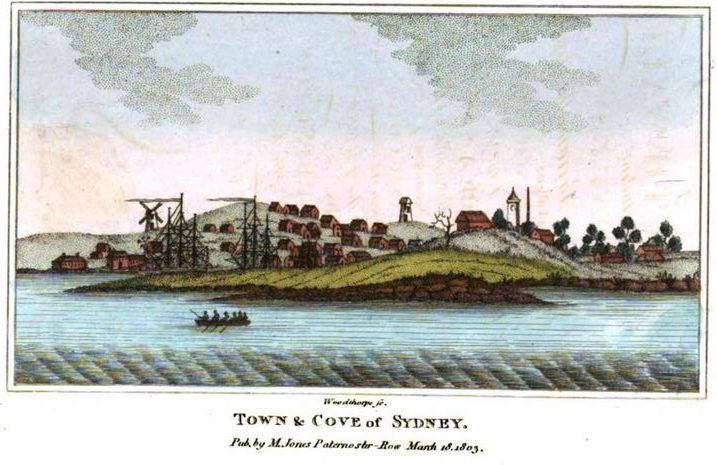
From the 1820s, the court reports give amusing details about convicts dancing & playing music. “Patrick M’Cormick, assigned to John Mackaness Esq., was brought up by his master, charged with absconding from his employment, and neglecting to attend to a horse … instead of looking after the animal, Pat was found in one of the Sheban houses on the Rocks tripping it on the light fantastic toe [dancing] to the tune of “Paddy Carey,” when he was seized and put into durm a vil [prison]. The bench sent him to the tread-mill for 7 days.” (Police Report. 3 September 1833). http://nla.gov.au/nla.news-article2213719
The Death of Captain Cook – a tune from 1790
His life was commemorated in the theatre, and in music, song and dance.
The famous Scottish poet, Robert Burns, used the tune “The Death of Captain Cook” for his song “Thous Ling’ring Star” – a song which became extremely popular in 19th century Australia and New Zealand. The tune may have come from the equestrian drama “The Death of Captain Cook” staged in Edinburgh in 1790. Here is a beautiful rendition of the song by the Evergreen Ensemble. Read more
Mrs Armstrong’s disorderly house
Popular culture could not be suppressed – fiddling & dancing flourished even amongst convicts. A report from 20 January 1827.

Mrs. Armstrong was brought forward, charged with keeping a disorderly house. Brown and Crummy [constables] heard fiddling and dancing at 10 o’clock last night. Mrs. Armstrong is notorious for keeping a house of ill-fame. Ordered to find sureties to keep the peace.”
Police Report. (1827, January 23). The Sydney Gazette and New South Wales Advertiser, p. 3. http://nla.gov.au/nla.news-article2187471
Dance party in Sydney
18th January 1800.
“We spent the afternoon with the greatest pleasure & harmony being entertained with some beautiful songs by the ladies, after which the Governor having played on the violin, we had some minuets and country dances…”
On 18 January 1800, a select company gathered at Government House in Sydney to celebrate the anniversary of the First Fleet’s arrival at Botany Bay twelve years previously. This cheerful event was recorded by John Washington Price, a surgeon from the convict transport ‘Minerva’, who participated in the festivities.This account is remarkable for the inclusion of small details – the ladies singing, the Governor playing, and the dancing of minuets and country dances. Never before had such an entertainment been described in the early colony and Price’s account provides a rare glimpse of social life in the fledgling settlement. The reference to the minuet demonstrates that an air of gentility was maintained even here in the remoteness at the end of the world.
Dancing cures cholera epidemic in 1832
In 1832 an outbreak of cholera threatened the women in the prison of Cork, Ireland. No-one knew how to prevent the development or spread of cholera because the discovery of germs — the cause of cholera — did not happen until 1864. Even worse, no doctors knew how to treat cholera patients.
The prison authorities came up with a special treatment.
Read the complete story!
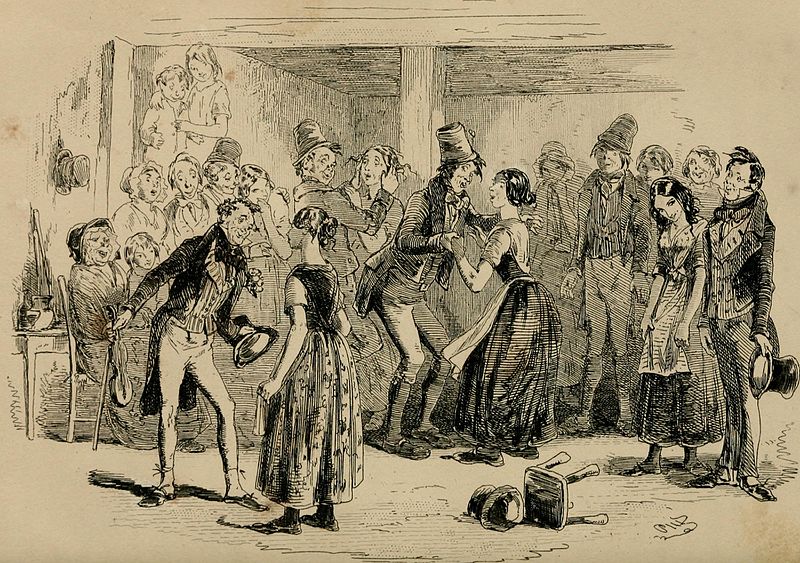
An Irish dance from Tales and sketches, illustrating the character, usages, traditions, sports and pastimes of the Irish peasantry. William Carleton, Dublin (1845)
The Victorian Christmas Waltz of 1866
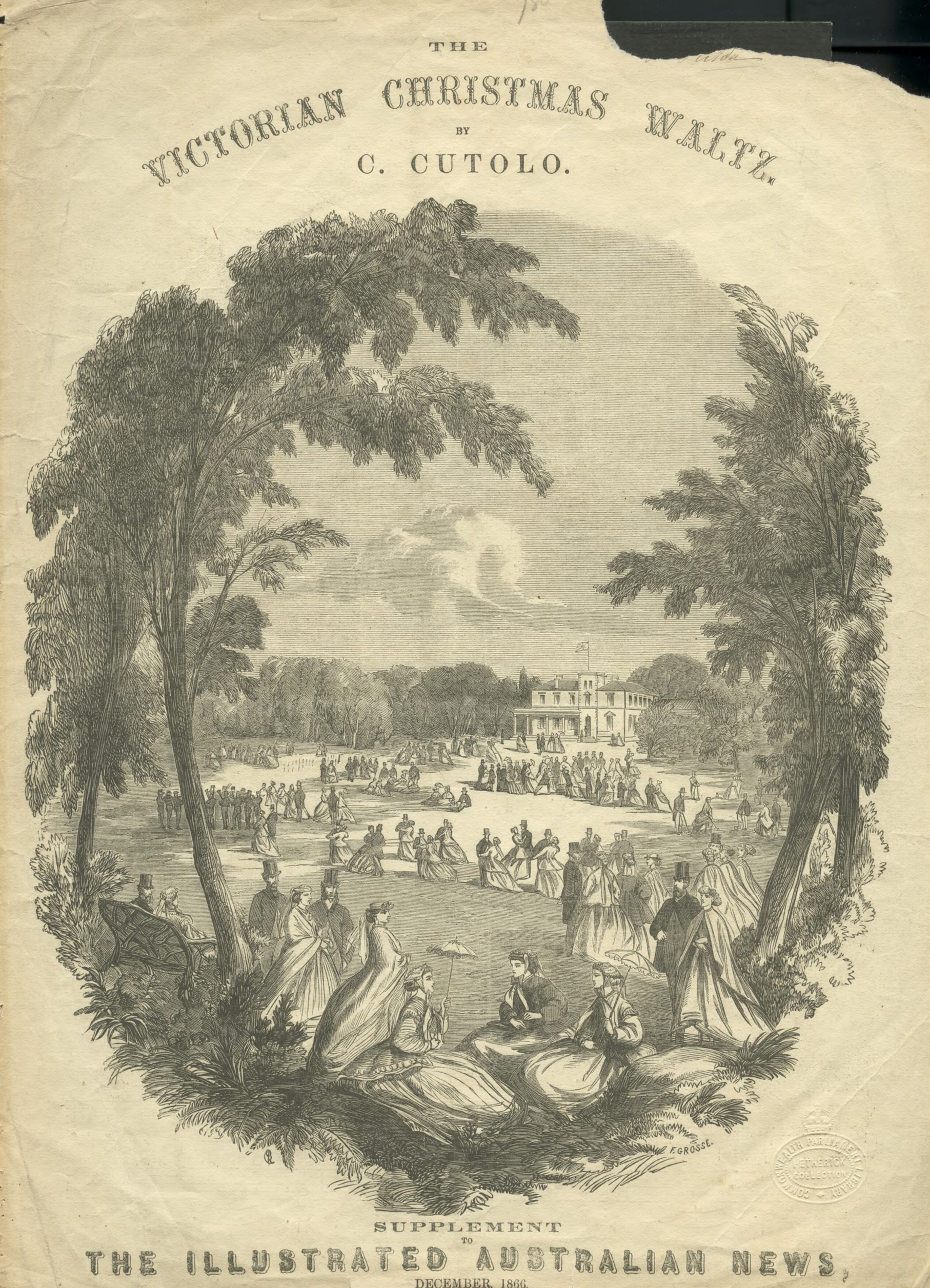
THE VICTORIAN CHRISTMAS WALTZ. (1866).
Cutolo, Cesare. & Grosse, F. National Library of Australia.
http://nla.gov.au/nla.obj-165183235
 Dr Heather’s talk
Dr Heather’s talk
Heather discusses her research and dancing in Australia on the Historical Tea & Dance Society‘s series “5 Things…inside the dancing mind”. Now online.
Click here for : Web chat and After talk
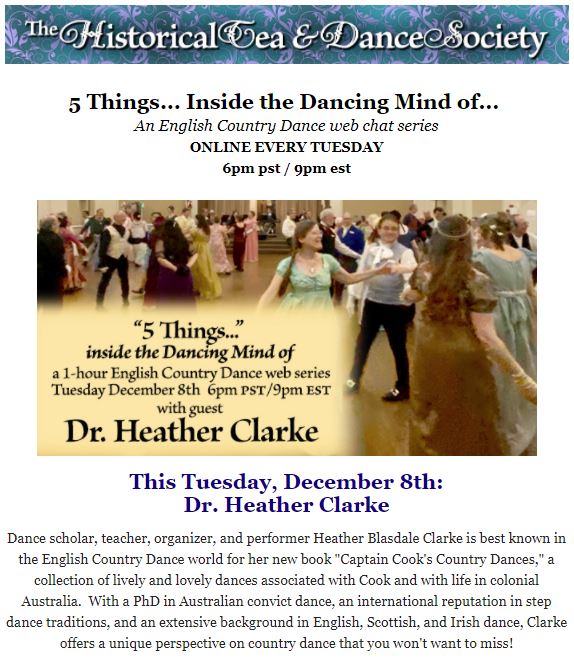
 A sailor’s story
A sailor’s story

‘The Sailor’s Return’, Charles Mosley (c.1750)
National Maritime Museum, Greenwich, London https://collections.rmg.co.uk/collect…/objects/127936.html
“Whilst I am on the tender subject of connubial felicity, I will relate a short dialogue which passed between two of my messmates. The eldest was a Benedict, the other about twenty, who wished to be initiated, as he thought he had a kind of sidewind regard for the innkeeper’s sister at Port Royal.
‘Why,’ said the first, ‘I met my wife at a hop in the country among a parcel of grass-combers. I asked her to dance, which she at first refused, giving for a reason that, as I was a sailor, I could not know how to lead down the middle and cast off at top.
“If that’s all,” I said, “my dear, I know how to do that as well as anybody in the room.”
I was now pushed aside by a lubberly, haymaking chap, who led her out, but who as much knew how to dance as the captain’s cow. After they all sat down, I asked the catgut scraper if he could play the fisher’s hornpipe. He said yes. I told him to play away, and I would dance it. After veering and hauling on the instrument for a short time, he brought it out. I then struck out, with my hat on one side, my arms a-kimbo, and a short stick under one of them. The bumpkins all stared, and Nancy began to awake and find out that a sailor know how to cut a caper.”
Except from: A Sailor of King George. The Journals of Captain Frederick Hoffman RN, 1793-1814
Introduction by Colin White. Chatham Publishing, London, 1999.
New video out now!
 Our documentary on Cook’s biography explored through music and dance premiered on the UK Historical Dance Society‘s online series on October 21st. Now available on YouTube. Watch now
Our documentary on Cook’s biography explored through music and dance premiered on the UK Historical Dance Society‘s online series on October 21st. Now available on YouTube. Watch now
There’s also a Q & A session https://youtu.be/SMsJhBlIRuk
![]() Pirates in Moreton Bay
Pirates in Moreton Bay

On the 16th of December 1831, the Caledonia was taken by a large band of convicts from its moorings in Moreton Bay, sending its entire crew ashore with the exception of its captain, Mr. Browning. The convicts sailed away to Fiji, forcing Captain Browning to navigate. Along the way, the pirates had a terrible row amongst themselves and murdered nearly half of their number, Captain Browning being spared in order to navigate the ship.
On arrival at Fiji, the pirates decided that they needed to also do away with Browning for their own safety, but the Captain overheard their conversation and crashed the ship in order to escape.
Browning was taken in by one of the local tribes, which he got on well with and taught to dance in the style of Europeans using the ship’s fiddle which he had rescued from the wreckage of the ship.
He was eventually rescued by an American whaler and returned home to Moreton Bay.
Read the original account here: http://nla.gov.au/nla.news-article12844491
Happy speak like a pirate day!
Image source: https://www.pirateshowcancun.com/
 1820 Subscription Ball & Supper
1820 Subscription Ball & Supper

A ball in Scarborough, England in 1820. Public Domain
 2020 Jane Austen/Australian Regency Ball.
2020 Jane Austen/Australian Regency Ball.
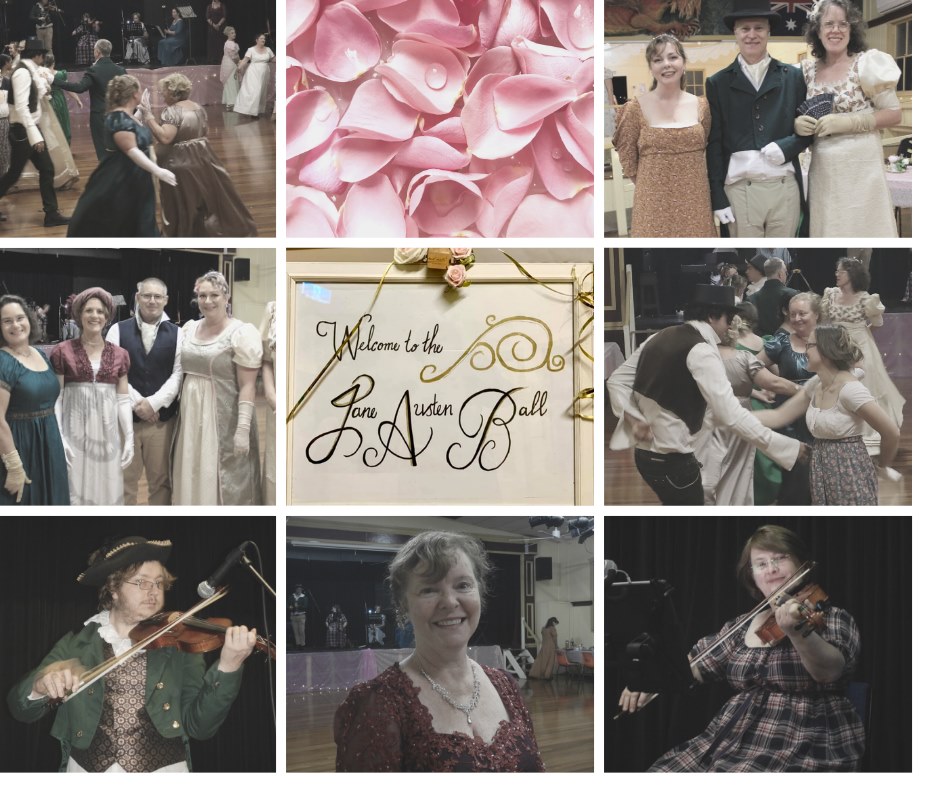 Photos from our ball are now in the gallery.
Photos from our ball are now in the gallery.
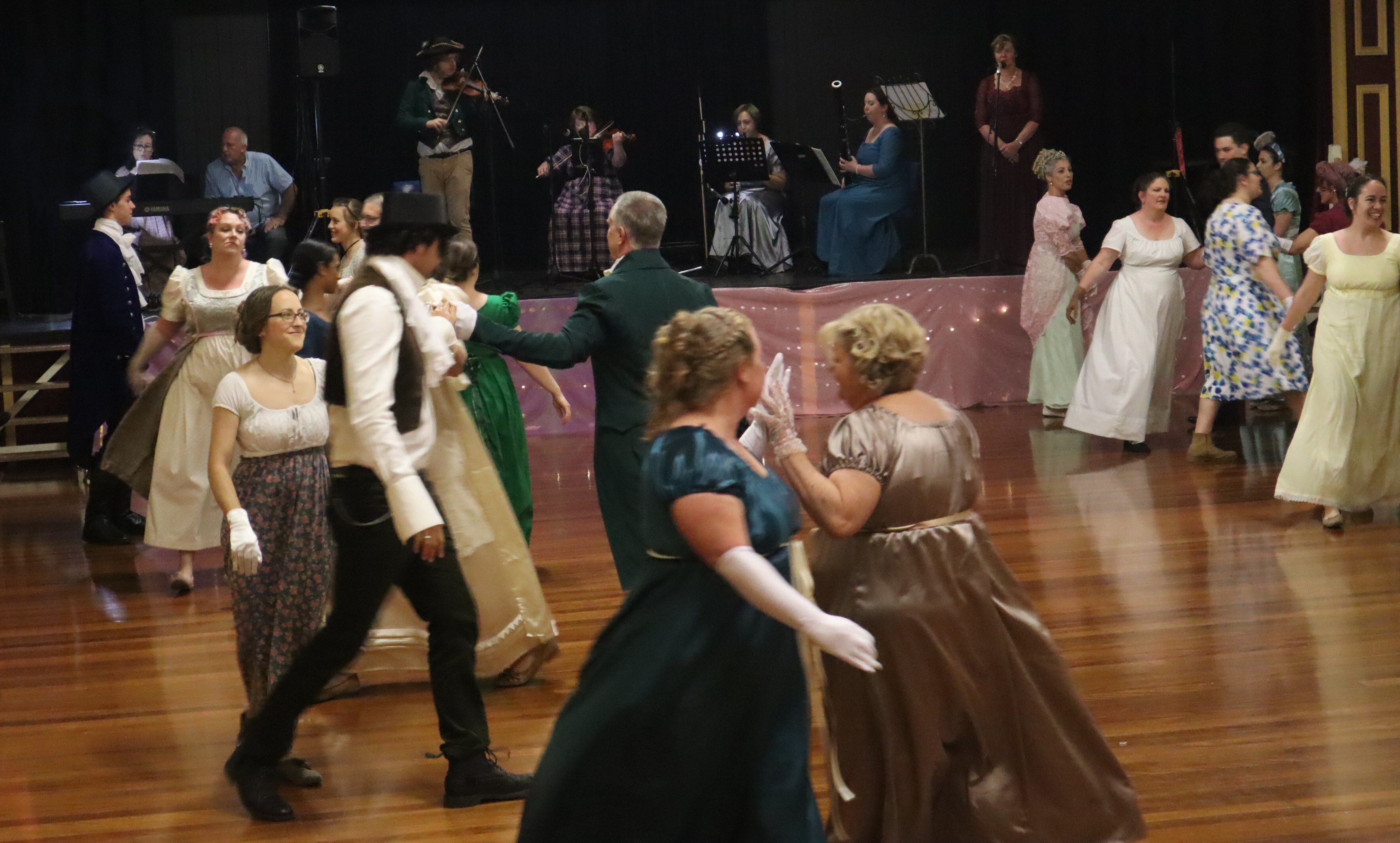 Thanks to everyone who came to our inaugural Jane Austen Ball at Dayboro. It was a lovely evening with a strong sense of community in the beautiful, heritage-listed hall. Thanks to our band, Phillip’s Dog who played as splendidly as always, and our special guest, Dayboro pianist Coral Keogh.
Thanks to everyone who came to our inaugural Jane Austen Ball at Dayboro. It was a lovely evening with a strong sense of community in the beautiful, heritage-listed hall. Thanks to our band, Phillip’s Dog who played as splendidly as always, and our special guest, Dayboro pianist Coral Keogh.
Photos! We’d love to share your photos of the ball on the website and Facebook. Please send them along!
Click here for the gallery of previous balls
One of our early colonial dance teachers, Rosie (dancing with Peter Stringfellow) is featured on this year’s National Folk Festival mug. Hurrah for dancing at #ourNFF. Artwork based on a photo from Melbourne Ceili Camera.
The National Folk Festival is selling the merchandise made for their (cancelled) 2020 festiva.
Tickets now available for our Jane Austen Ball. Click here
IN/FORM Issue #3, 2020
Published on Aug 21, 2020
Issue #3 of Ausdance QLD’s magazine IN/FORM focuses and celebrates the amazing array of members across our dance sector.
Check out this article about Dr Heather and early colonial dance in the latest Ausdance QLD magazine.
![]() Our band, Phillip’s Dog, provided a snippet of music for “French Science on the High Seas: Voyages of exploration and discovery” for National Science Week.
Our band, Phillip’s Dog, provided a snippet of music for “French Science on the High Seas: Voyages of exploration and discovery” for National Science Week.
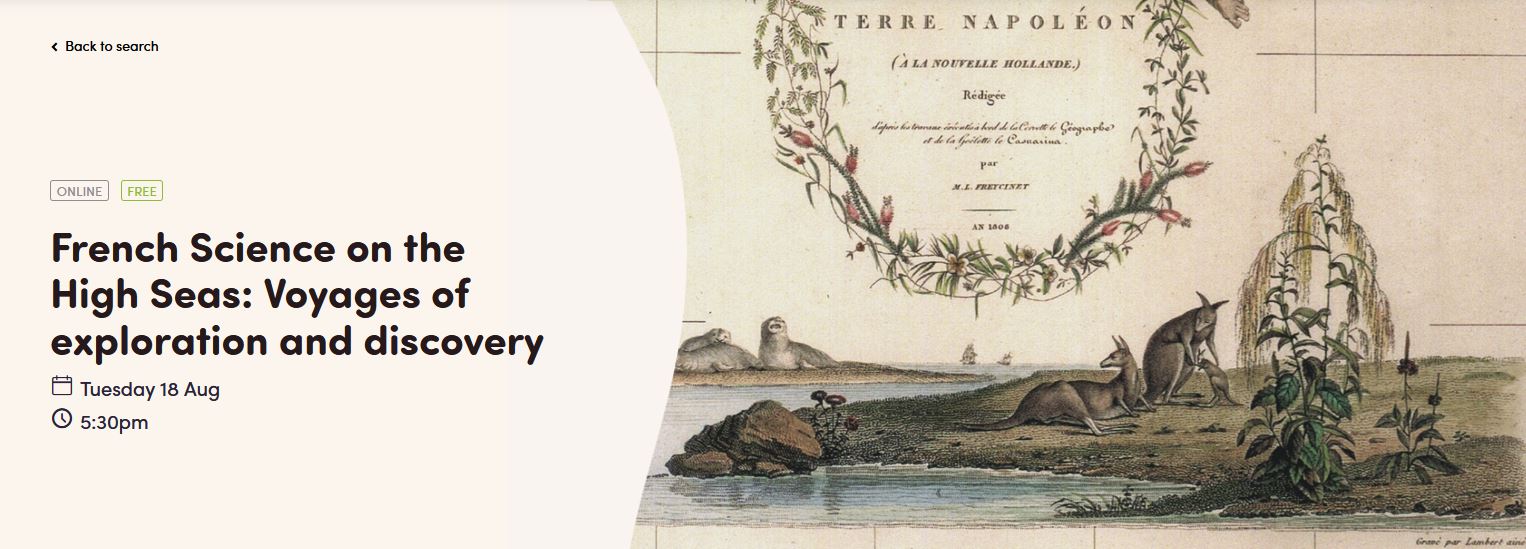
![]()
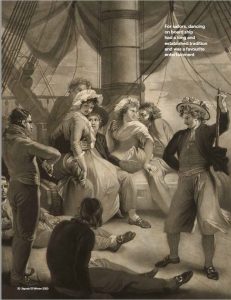 Catch our article in Signals, the quarterly magazine of the Australian National Maritime Museum.
Catch our article in Signals, the quarterly magazine of the Australian National Maritime Museum.
Dancing with Cook
Soft airs and hornpipes with the great navigator
“Captain Cook wisely thought that dancing was of special use to sailors…it was to this practice that he mainly ascribed the sound health which his crew enjoyed…(Blasis, 1830)
One perspective of James Cook which has rarely been examined is how music, theatre, and dance were interwoven into his life and served to venerate him after death. He used music and dance to keep his crew healthy and to establish peaceful communications with people he encountered on his voyages. His own life was commemorated in dance.
See pages 30-33 in the online edition.
or
Download the pdf. Dancing_with_Cook_Signals131
The 1839 illegal masquerade ball
With dancing being banned in nightclubs in Brisbane due to Covid restrictions, Kate O’Toole on ABC Radio contacted me to chat about other times when dancing had been banned in Australia.
The interview on 10 July, covered the story of an illegal ball in Sydney in 1839.
THE MASQUERADE.—Inspector Price was going the rounds about twelve o’clock on Friday night, his ears were assailed by a most horrible fiddling and drumming, which he found proceeded from a house kept by a person named Norman who has a room fitted up for the express purpose of giving fancy balls. After stationing a couple of Constables at the door Price went up stairs, where he found about fifty persons assemblcd, of all ranks, and with all kind of dresses on. Great war the confusion at the Inspector’s approach, and how to get out was the question with many which was solved by some who jumped out of the window, and others making the best of their way down stairs. The first person on whom the Inspector fixed his eye upon was a little shop-boy dressed as Jim Crow, looking very much like a dirty chimney sweep on a May-day, who was immediately handed into custody ; the next was a young man who receives a salary of ten shillings a-week, and was dressed in a sort of petticoat with a scarlet jacket trimmed with gold lace who described him-self as being dressed in ” Greek custom,” who ” not having anything to show for his freedom,”‘ was placed with Jim Crow. Four nymphs of the pave who were dressed as Don Giovanni, Constantin, Squalling Fan, and Paul the Pet of the Petticoats, were taken for disorderly conduct, and the whole party were handed to St. James’ watch-house where they were confined until next morning, when they had the felicity of being marched to the Police Office. Saturday being a holiday, Mr. Windeyer would not enter into the case, but ordered them to be admitted to bail for their appearance this morning, and about eleven o’clock they were turned out amidst the admiring gaze of a large concourse of people. We are glad that the Police appear to be determined to put an end to these nuisances, and we trust the Chief Constable will not fail to lay an information against the keeper of this house for keeping an unlicensed place of entertainment, the penalty for which is £50. The same ” concern” was fined £30 last week, for illicitly retailing spirituous liquors.
ACCIDENTS, OFFENCES, &c. (1839, January 28). The Sydney Herald (NSW : 1831 – 1842), p. 2. Retrieved February 19, 2020, from http://nla.gov.au/nla.news-article12855188
The National Folk Festival is selling the merchandise made for their (cancelled) 2020 festival – including this mug, with artwork based on a photo of our dancer/teacher, Rosie (dancing with Peter), taken by Melbourne Ceili Camera.
Now that’s cool!
![]() We started back dancing on 14th of August and featured this dance called ‘The Black Nag’. Here is an amusing animated version.
We started back dancing on 14th of August and featured this dance called ‘The Black Nag’. Here is an amusing animated version.
F
Acknowledgement of Country.
We acknowledge the traditional custodians of the Country on which we live and work, and pay respect to Elders past, present and emerging. We acknowledge the impact colonialism has had on Aboriginal Country and Aboriginal peoples and that this impact continues to be felt today.
The information on this website www.historicaldance.au may be copied for personal use only, and must be acknowledged as from this website. It may not be reproduced for publication without prior permission from Dr Heather Blasdale Clarke.
